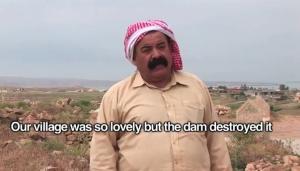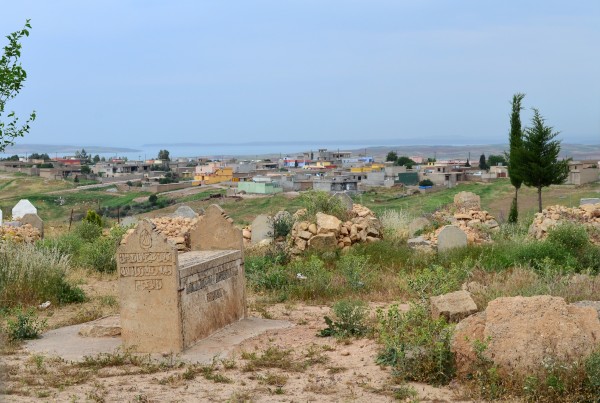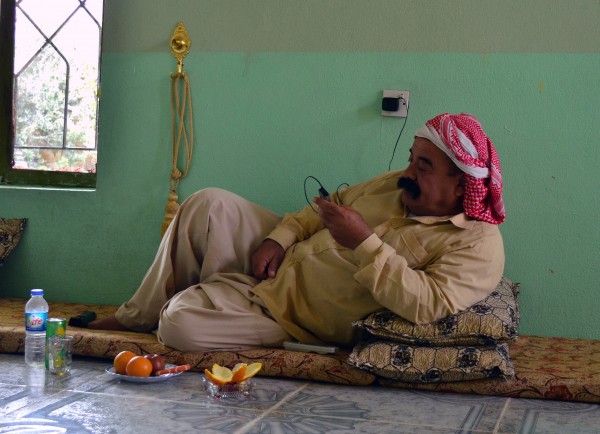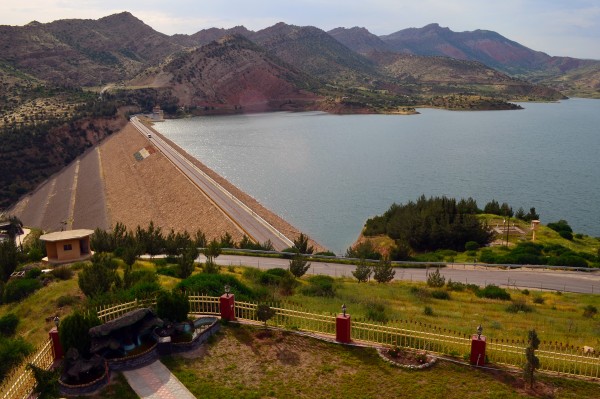
Meet Some of the Rare Cultures Sustained by Iraqi Kurdistan’s Rivers

http://www.youtube.com/watch?v=9pMwx8I9hLY
This spring and summer, National Geographic Young Explorer Julia Harte is traveling along the Tigris River from Southern Iraq to Southeastern Turkey, documenting ancient sites and modern communities along the river before they are transformed by the Ilısu Dam, an 11 billion-cubic-meter hydroelectric dam that will generate 2 percent of Turkey’s power.
———
A mosaic of religious and ethnic minorities thrive in Iraq’s northern Kurdish region.
Yazidis have lived here for millennia. A monotheistic faith with Sufi and Zoroastrian elements, Yazidis claim theirs is the world’s oldest religion. After God, they venerate an angel king who takes the form of a peacock.
“When Yazidi clergymen perform rites in this area,” says Sheikh Rasho Rasho Hussein, keeper of a Yazidi temple in the Kurdish town of Khanka Kavin, along the shores of the Mosul Dam on the Tigris River.
“They bring peacocks as a symbol of the religion. When they bring the peacock, people give offerings to the peacock. And when there are disputes, they solve them.”

The Mosul Dam reservoir is seen behind the Yazidi town of Khanka Kavin in Iraqi Kurdistan. Photo by Julia Harte.
Life has not been easy for the Yazidis of Khanka Kavin. In 1961, Sheikh Hussein says, the village was the target of an airstrike ordered by Saddam, in the dictator’s efforts to rid the country of religious minorities. After spending a few years in the nearby province of Shingal, Iraq, Hussein’s family and most of the others returned to the area. When the Mosul Dam opened in 1986, however, its reservoir flooded the village where Sheikh Hussein and 5,000 Yazidi families lived.
They moved to higher ground, where agriculture is more difficult. “Our village was so lovely, but the dam destroyed it,” says Hussein. He knows about the dams Turkey is building upstream on the Tigris, and hopes that the Turkish government allows some water to still reach Iraq. If he could communicate with the Turks whose villages will be affected by those dams, the way Khanka Kavin was by the Mosul Dam, Sheikh Hussein says, “I would tell them to go to human rights organizations and the United Nations and try to not let them build the dams.”

Sheikh Rasho Rasho Hussein, keeper of the Yazidi temple in Khanka Kavin, is seen in his home. Photo by Julia Harte.
Changes in water policy have displaced another ancient religious community in Iraq: Mandaeans. Water represents divine life force for Mandaeans and is central to their rituals.
Mandaeans “cannot do anything without a river,” says Ahlam Saeed, director of the Mandaean Center in Erbil, Iraqi Kurdistan’s capital city. When they marry, pray, observe funerary rites, or partake of any other sacred activity, they must be by a river, she explains.
Most Mandaeans used to live near the Euphrates and the Tigris in Southern Iraq, using the rivers for their ablutions. But dwindling river levels, as well as brutal persecution by Sunni and Shiite extremists, forced many Mandaeans to migrate to Kurdistan.
Saeed describes the intimidation her people have faced. “They put signs on our doors saying, ‘Leave your house, or we will kill you,’” she explains. “What shall we do? Some of our families, what did they do? They said, ‘No, it is our house, we won’t move.’ Directly, two days later, they killed them.”
Saeed used to live along the Tigris River in Baghdad, but moved to Kurdistan when the situation grew too tense. Now, she and her fellow displaced Mandaeans struggle to maintain their rituals. They bring water to their homes by truck from the closest rivers and put it in a covered basin for daily use. With the global Mandaean population at just 50,000, Kurdistan’s rivers now play an important role in sustaining Mandaean culture.

Mandaean youth are seen playing music together in the Mandaean Cultural Center in Erbil. Photo by Julia Harte.
Armenians are another of Kurdistan’s religious minorities that were displaced by persecution. In 1923, Armenians fleeing genocide in Turkey built a church in the Kurdish town of Zakho, close to the Turkish border.
Zakho’s main waterway, the Little Khabur River, originates in Turkey. Artoon Khalatian, priest of the Armenian church in Zakho, has heard of Turkey’s upstream dams on the Tigris — and hopes there won’t be similar projects on the Little Khabur.
“We don’t want to be in a situation where the river dries up, because Armenians have many times become refugees during their history, and I don’t want us to become wanderers one more time,” he says.
Ever since the Armenian genocide, Khalatian says, his people have learned to expect anything from the Turks. But he firmly believes “they should act humanely towards other nations, and not restrict their access to water.”

The iconic bridge of Zakho, over the Little Khabur River, reportedly dates back to Roman times. Photo by Julia Harte.
Yazidis, Mandaeans, and Armenians are just a sample of the ethnic and religious communities that have found a safe haven in this small region.
As Kurdistan’s economy stabilized and grew during the peaceful period following the Kurdish revolution from Iraq in the 1990s, a diversity of minorities migrated to Kurdistan seeking peace and prosperity. Some, such as the Mandaeans, rely directly on proximate rivers to sustain their religious community; others simply rely on rivers for water to drink and farm.
Five branches of the Tigris River cross through Kurdistan, according to Bakhtiyar Sabir Mohammed, lecturer in the management and economy department at Erbil’s University of Salahaddin, and 28 billion cubic meters of Kurdistan’s water supply comes from sources in Turkey.
Normally, rivers would only be a back-up source for Kurdistan’s groundwater reserves, Mohammed says, but now Kurdistan is planning a series of dams on its rivers to compensate for the water loss from Turkish dams. Mohammed thinks Kurdistan will be able to survive the series of Turkish dams currently under construction on the Tigris.
But southern Iraq, he says, will suffer mightily, propelling many more refugees to Kurdistan. And if Kurdistan’s rivers are depleted, such minority populations will be among the first to suffer.

More dams such as the 52 million cubic meter capacity Duhok Dam are slated for construction to prevent future water shortage in Iraqi Kurdistan. Photo by Julia Harte.
- 4144 reads


